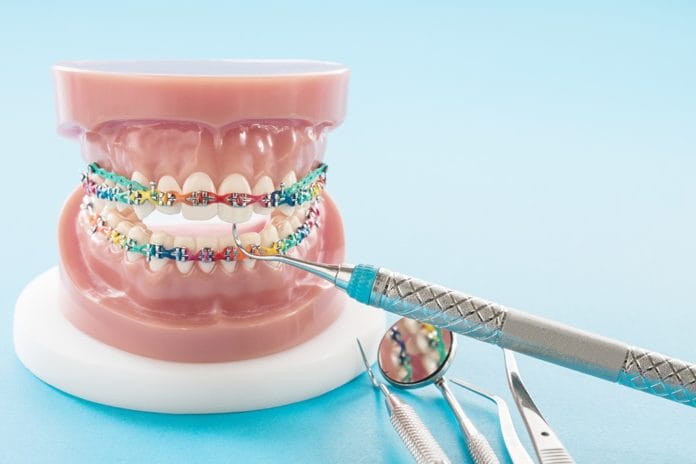I can almost vouch with utmost certainty that one of the most exhilarating events for a dental hygienist is receiving and opening brand-new instruments. The sheer knowledge of knowing that new instruments pack a sharp edge is sure to have every hygienist playing favoritism among the instruments in their stash − at least until the edges become dull.
While sharp instruments are pivotal in dental treatment for many reasons, dental sharpening appears to be one of the least favorite skillsets among most dental hygienists.
Because of the overwhelming and abundant knowledge that is packed into dental hygiene school, dental sharpening is merely touched on. While an important task to possess, it pales in comparison to the knowledge and expertise that a dental hygienist must know to practice their skill professionally. Some dental hygiene students may feel confident about how to sharpen their dental instruments, but that skill will slowly diminish the less the clinician practices it thereafter. Sharp dental instruments are important for several reasons.
Less Fatigue
Dental professionals are more at risk for developing musculoskeletal disorders (MSD) than any other health professional.1 MSD-related injuries reported by dental hygienists are attributed to poor ergonomics, repetitive motions, grasp, force, and pinch.2
Pair those motions with dull instruments, and the threat is further heightened. Dull instruments force the clinician to work harder by grasping, pushing, and pulling in order to remove calculus deposits. In response, the wrist will come out of the “neutral” position, causing injury and fatigue. For example, imagine cutting a well-done steak with a butter knife. The task is meant for a sharper tool, and so is removing calculus.
With properly sharpened instruments, calculus can be easily removed while maintaining proper ergonomics.
Time Management
Dental hygienists are placed on a time-constrained schedule, and time management is key. Every factor that can help the smooth flow of patient transition will not only help in achieving a successful schedule but will make a happier clinician. Running behind schedule creates a tense and frustrating environment for both the practitioner and the patient.
When working with dulled instruments, it takes more effort and time to remove calculus deposits, consequently placing you behind schedule. With sharp instruments, fewer and lighter strokes are required to remove deposits, and tactile sensitivity is increased, thus assisting in quicker optimal calculus removal.
Optimal Patient Care
Every dental hygienist’s goal should be to provide unparalleled patient care. Maintaining patient comfort while efficiently removing calculus deposits are two ways to help achieve exceptional care. Dull instruments decrease patient comfort as dental professionals are forced to work harder and compromise technique. If deposits are burnished and left within the periodontal pocket, the integrity of care is then compromised.
One study concluded that a dental instrument typically loses its edge after just 15 strokes.3 With this thought in mind, instruments ideally should be sharpened daily. While not practical in most dental hygiene schedules, it definitely raises awareness of how quickly these instruments need regular attention. The duller an instrument becomes, the harder it will be to restore the cutting edge.
If an instrument appears to have less of a “bite” during an appointment, it would be ideal to stop and sharpen the instrument immediately. With habitual practice, it only requires a few strokes to restore an instrument’s cutting edge. However, if the instrument remains dull for an extended period of time, it will require recontouring, which takes longer to achieve, affects the instrument’s integrity, and creates unnecessary hand fatigue if sharpening by hand.
Instrument retipping, or replacing the turning from the instrument shank and replacing it with a new turning into the used instrument handle, is yet another solution some may consider in regards to mainlining instrument sharpness. While this may sound ingenious, retipping compromises the quality of the instrument.4 This will, in turn, affect the adaptation of the instrument and ultimately affect the efficacy of the procedure to the patient.
Proper Technique Matters
While instrument sharpening is important, it is equally imperative to use the proper method when performing the task. Improper sharpening techniques will only result in further clinician fatigue and error as the instrument loses its proper shape/edge. As described by Wilkins, the sharpening process has three objectives:5
- To produce a functionally sharp edge
- To preserve the instrument contours necessary for proper function
- To conserve blade material in the interest of a longer useful life
In order to better understand how to sharpen instruments correctly, clinicians should consider taking a refresher course as often as needed. A hands-on class will further help demonstrate and master the skill. Naturally, the internet is chock-full of illustrative videos that also may be utilized.
Still Afraid of the Task…
If you are uncomfortable with the task, several sharpening devices can help guide you with the correct technique. Some devices are smaller battery-operated compact units meant for maintenance sharpening. Other heftier models are meant to get the dullest instruments sharp again. Guides are also available for purchase to help maintain correct instrument angulation.
If you are still uneasy, you can utilize an instrument sharpening service that will perform the task for you. However, keep in mind the turnaround time these services require that you be without your instruments. Some companies offer mail-in programs, while others pick up and deliver your instruments to your office doorstep.
Alternatively, purchasing instruments that stay sharper longer or that simply do not require sharpening for the life of the instrument may be some hygienists’ saving grace when it comes to this unpopular topic. These instruments undergo a process that hardens the stainless steel and then encapsulates the steel with a diamond-like layer that makes an edge that will last for months.6
Bear in mind that even ultrasonic tips wear down and need to be replaced according to their wear indicator cards. The last 1 to 2 mm of the tip is the most active, and once that is lost, the efficacy of the tip is reduced by 25%. After 2 mm is worn, 50% of the tip’s efficacy is lost.7 While ultrasonic tips cannot be sharpened, they do need to be replaced when worn.
Either way you slice it (no pun intended), dental hygienists need to maintain sharp instruments. In the words of G.V. Black, “Nothing in the technical procedures of dental practice is more important than the care of the cutting edges. No man has ever yet become a good and efficient dentist until after he had learned to keep his cutting edge sharp.”8
Before you leave, check out the Today’s RDH self-study CE courses. All courses are peer-reviewed and non-sponsored to focus solely on pure education. Click here now.
Listen to the Today’s RDH Dental Hygiene Podcast Below:
References
- Brignardello-Petersen, R. Saddle Seats Seem to Reduce the Ergonomic Risk Score Compared With Conventional Seats Among Dental Students. Journal of the American Dental Association. 2019; 150(6): e100. https://jada.ada.org/article/S0002-8177(19)30098-4/abstract
- Johnson, C.R., Kanji, Z. The Impact of Occupation-Related Musculoskeletal Disorders on Dental Hygienists. Canadian Journal of Dental Hygiene. 2016; 50: 72-79. https://files.cdha.ca/profession/journal/2242.pdf
- Tal, H., Panno, J.M., Vaidyanathan, T.K. Scanning Electron Microscope Evaluation of Wear of Dental Curettes During Standardized Root Planing. Journal of Periodontology. 1985; 56(9): 532-536. https://www.ncbi.nlm.nih.gov/pubmed/3897505
- Boge, E. (2018, April 24). The Rest of the Story: Dental Instrument Retipping. Today’s RDH. www.todaysrdh.com/the-rest-of-the-story-dental-instrument-retipping-emily-boge/
- Paquette, O.E., Levin, M.P. The Sharpening of Scaling Instruments: I. An Examination of Principles. Journal of Periodontology. 1977; 48(3): 163-168. aap.onlinelibrary.wiley.com/doi/abs/10.1902/jop.1977.48.3.163
- XP Sharpen-Free. (n.d.). American Eagle Instruments. https://am-eagle.com/about-xp-instruments/
- Hygiene Pro Ultrasonic Scaler Inserts. (n.d.). Brasseler USA. http://www.brasselerusadental.com/products/hygienepro-ultrasonic-scaler-inserts/
- Lowe, A. The Cutting Edge of Dental Instruments. Vital. 2010; 7: 33-35. https://doi.org/10.1038/vital1242











